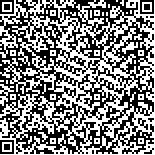| 摘要: |
| 利用微卫星查找软件对现已公布的6632 条刺参ESTs 的数据库中2—6 个碱基重复单元组成的简单序列重复进行筛选, 进而对其微卫星的丰度和分布进行比较研究。共发现微卫星序列416个, 占整个ESTs 数据库的6.48%; 其中含双碱基重复序列146 个, 数量最多, 占ESTs 数据库中发现微卫星序列总数的65.86%; 三、四、五、六碱基重复序列分别占微卫星序列总数的26.68%、1.68%、0.24%、5.53%。对含有SSR 位点符合微卫星引物设计的EST 序列利用Primer 软件结合人工方法设计合成引物21 对, 其中13 对有扩增产物且均为多态位点。扩增产物变性聚丙烯酰胺胶电泳, 统计每个微卫星标记等位基因数目, 计算等位基因频率、观测杂合度、期望杂合度等统计学指标的评价。结果表明, 在13 个微卫星位点上, 等位基因的数目从3 到8 不等, 等位基因长度从175—382bp, 观测杂合度和期望杂合度分别为0.158—0.650 和0.198—0.841, 所筛选微卫星标记可于遗传分析。
|
| 关键词: 刺参, 微卫星, 表达序列标签, 等位基因 |
| DOI:10.11693/hyhz201001019019 |
| 分类号: |
| 基金项目:山东省良种工程项目“速生抗病耐高温刺参良种选育”,2008—2011; 山东省优秀中青年科学家奖励基金(博士基金)项目,2008BS06004 号; 山东省科技攻关项目“海参新品系选育及构建”, 2008GG10005023 号。 |
附件 |
|
| ISOLATION OF MICROSATELLITE MARKERS FROM APOSTICHOPUS JAPONICUS ESTs |
|
SUN Guo-Hua1, YANG Jian-Min1, SONG Zhi-Le2, SUN Xiao-De1,3, WANG Wei-Jun1, ZHANG Yu1
|
|
1.Shandong Marine Fisheries Research Institute;2.Zhifu Fishery Technical Extension Station;3.School of Fishery and Life Science, Shanghai Ocean University
|
| Abstract: |
| Frequency and density of 2—6bp simple sequence repeats (SSRs) were analyzed from Apostichopus japonicus EST (expressed sequence tag) database comprising 6632 sequences. The result shows that 416 microsatellite sequences (taking 6.48%) were obtained. The dinucleotide repeats motifs appeared to be the most abundant type in A. japonicus ESTs (taking 65.86%), followed by trinucleotide, tetranucleotide, pentanucleotide and hexanucleotide repeats at 26.68%, 1.68%, 0.24%, and 5.53%, respectively. 21 primer pairs were designed with Primer software and manual-searching method from EST sequences containing microsatellites. 13 primers had polymorphic PCR products in Chinese and Russian sea cucumber samples by electrophoresis analysis. In the 13 microsatellite loci, the alleles numbers distributed from 3 to 8, and the range of these alleles were between 175 to 382bp. The observed heterozygosity and expected heterozygosity distributed from 0.158—0.650 and 0.198—0.841, respectively, which showed that these 13 microsatellite loci were suitable for genetic analysis.
|
| Key words: Apostichopus japonicus, Microsatellite, Expressed sequence tag (EST), Allele |
